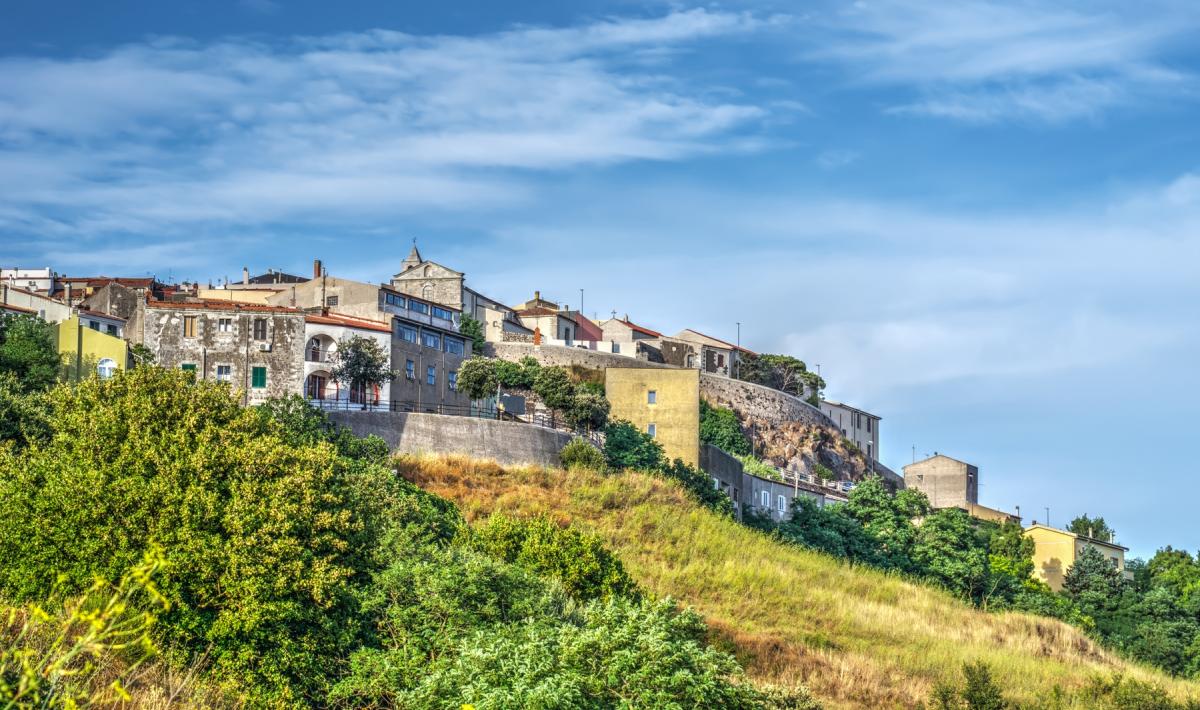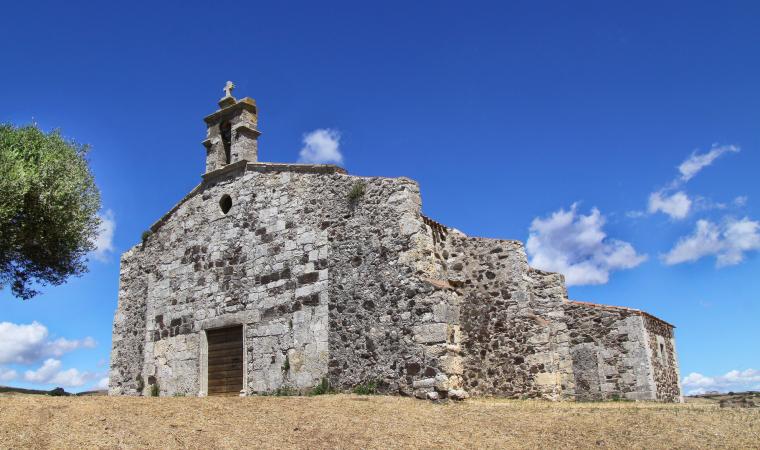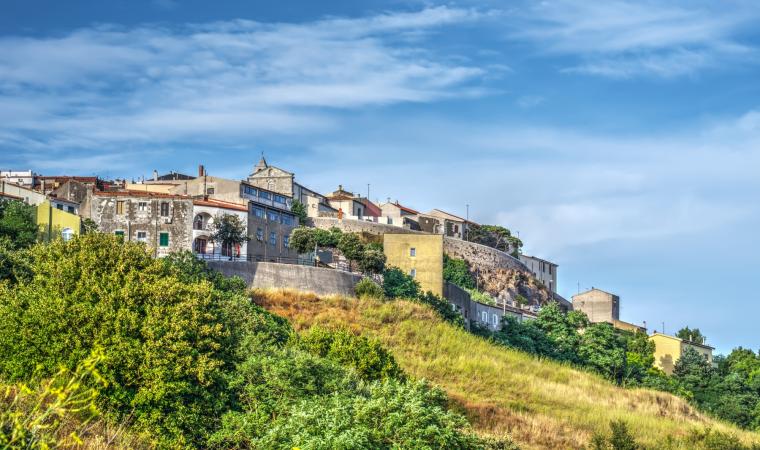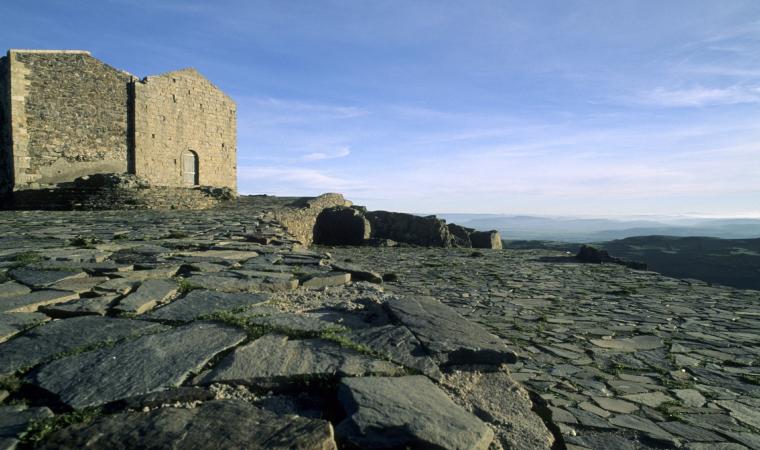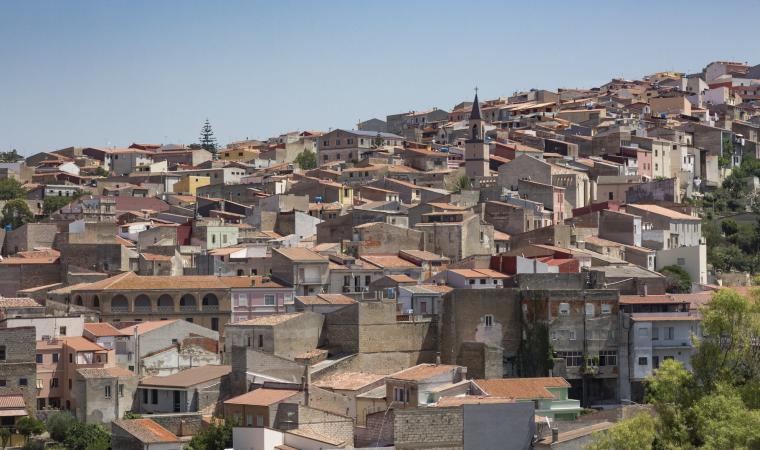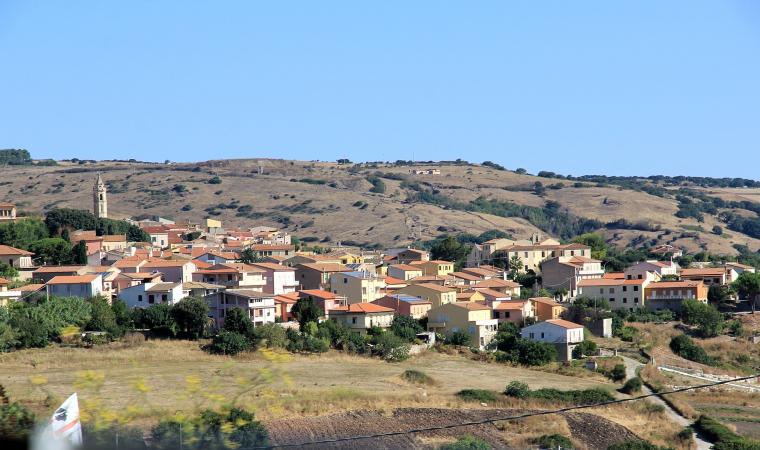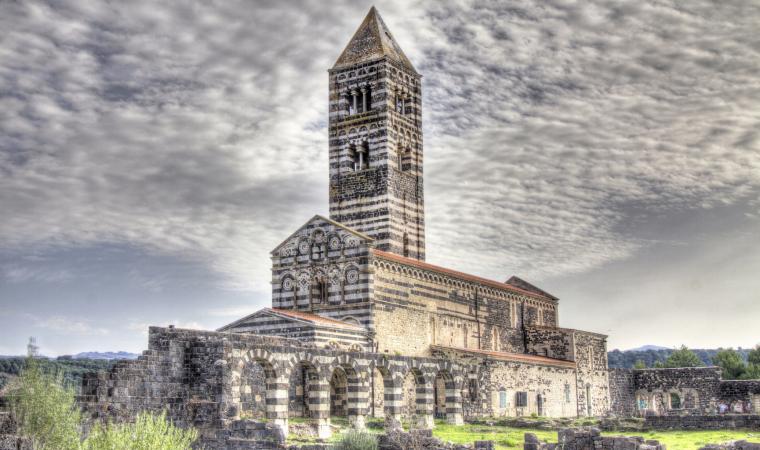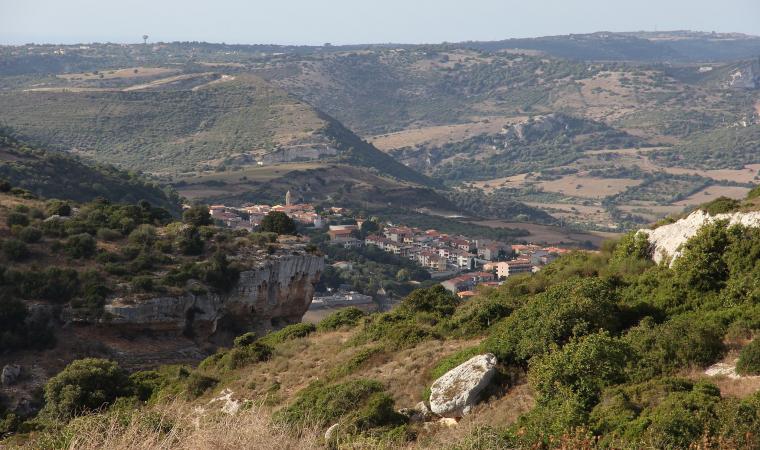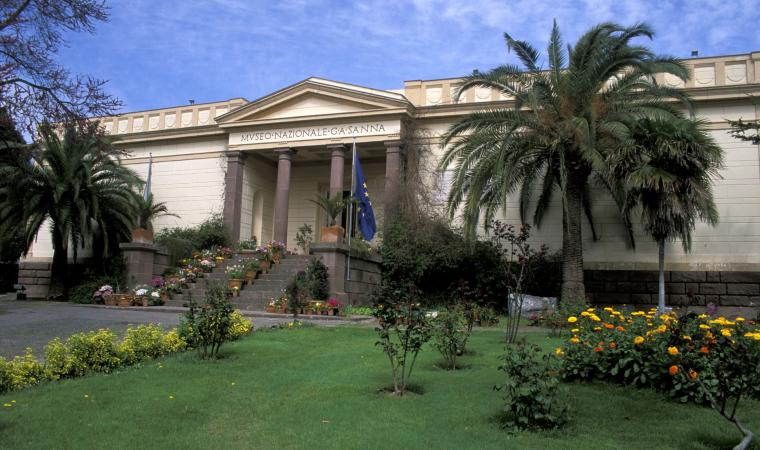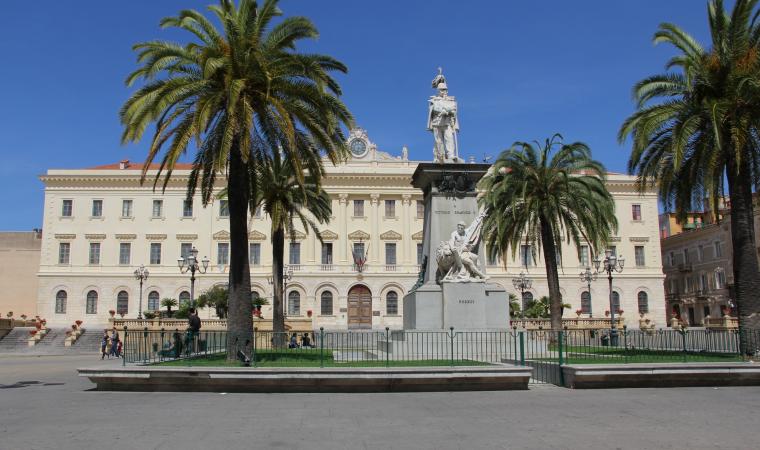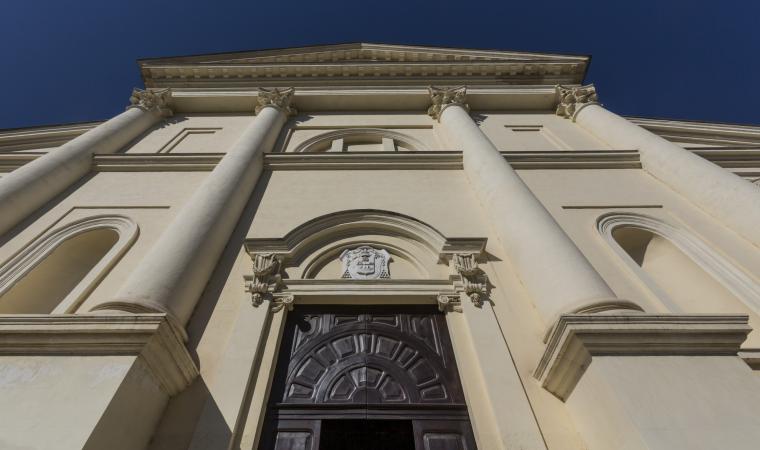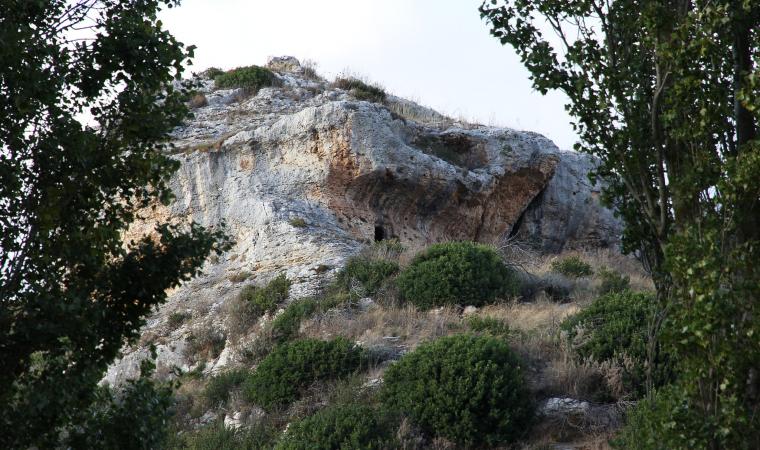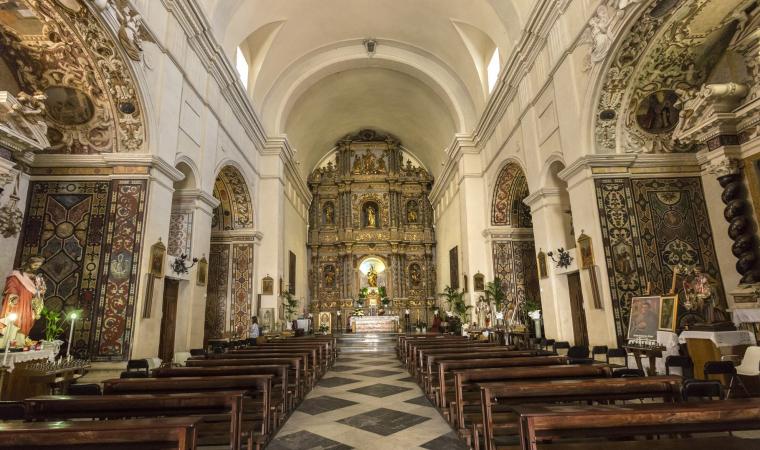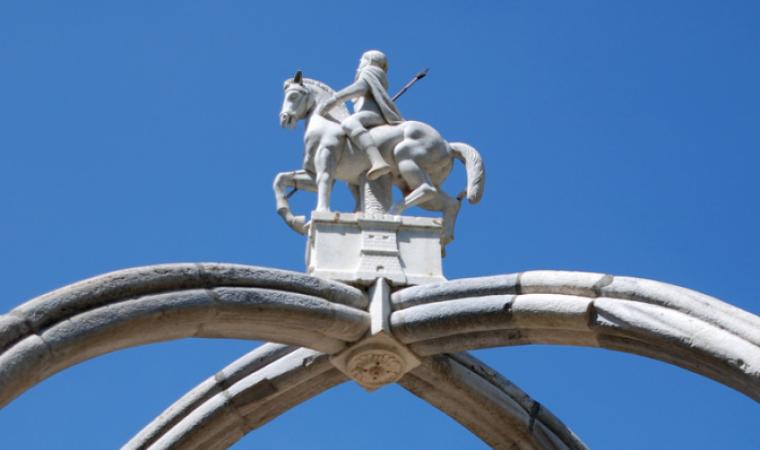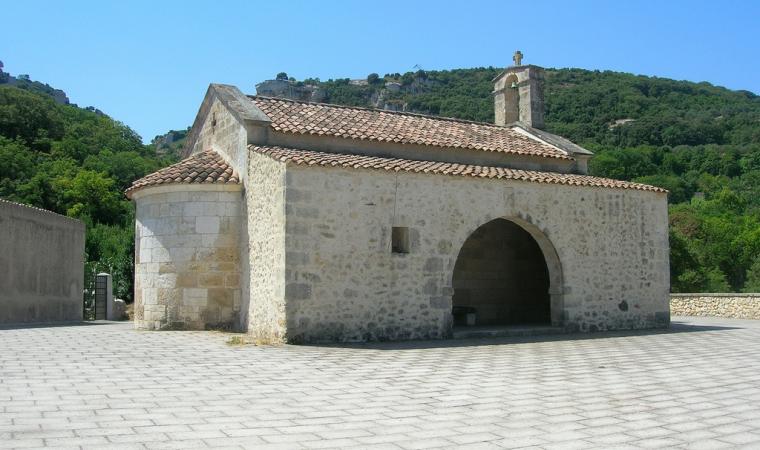It is located at an altitude of almost 700 metres in the northernmost of the three peaks of Tuffudesu, dominated by the Malaspina Castle, dating back to the end of the 12th century, of which you can admire two towers and perimeter walls. Osilo, a village with three thousand inhabitants, is the second highest Municipality in the province of Sassari. It has medieval origins and was a very important village until the early 20th century. Its artisan traditions are still alive and well, especially textile products and agricultural and pastoral produce: it is the home of Pecorino cheese. Another delicacy is the casadinas (formaggelle), made with a soft cheese filling. In August, little cobbled streets, stone houses and historical buildings (like the Palazzo Civico built in 1600) come to life with Artes Antigas, a revival of ancient trades and traditional culture, and with the of Corsa all'anello, an equestrian joust where the knights, in traditional costume, catch rings, suspended along the track, on their lances, while galloping.
Osilo boasts an exceptional number of churches: 36. Churches that stand out include the parish church of the Immacolata Concezione (end of 17th century), with a multi-coloured marble altar and a seventeenth century wooden choir, and the little church of San Maurizio, in Gothic-Catalan style (17th century), with a tuff altar that guards the statue of the saint in a painted niche with a sculpted shell. Santa Ittoria 'e Sa Rocca was restructured in 1731 with a Renaissance façade and a curvilinear shape. In the old town centre, stands Nostra Signora del Rosario (17th century), an example of late-Renaissance art with Gothic details. Not far away, there is the church of Babbu Eternu, perhaps the most ancient in the village. In the outskirts, there is Sant'Antoni 'e Sa Punta (17th century). Not to be missed, is Nostra Signora di Bonaria, on the peak of Mount Tuffudesu, at a height of 800 metres: from here, you can enjoy a view that reaches as far as Asinara. It was a symbol for sailors, as it is one of the first points to be spotted from the sea. Lastly, there are the churches of San Giovanni Battista, Santa Lucia and San Lorenzo, which was mentioned as early as 1688 but renovated at the beginning of the 20th century. The little church is located in the district of the same name, inside the valle dei mulini (valley of mills). Here, the limestone rock features sudden vertical drops that make it possible for the water to flow forcefully and it has, in fact, always been used: in the middle of the 19th century, there were 25 active mills. Today, they are in a state of disuse and can be visited. In the precipices of Mount Tuffudesu and of the rest of the territory, there are more than thirty rock-climbing routes. As well as a destination for rock-climbers, the area is also popular with mountain bike enthusiasts, thanks to hills, mule tracks and winding roads. The territory is scattered with traces of human presence since the Neolithic era: the eight Domus de Janas tombs of Ittiari and the three of Is Scalas, two Tombs of the Giants and about ten Nuraghi, among which Sa Pala 'e Su Cossu.

